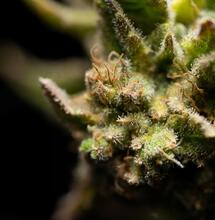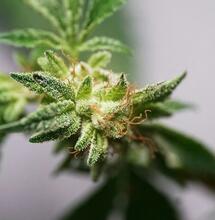New Research Suggests Cannabis Originated from China

As the old adage goes, the world was made in China. And so was cannabis it appears, according to a new genetic analysis conducted by scientists.
Earlier scientific research has shown that Asia was an important hotspot of domestication for different crops, including soybean, apricot, and peach. Now add cannabis "officially" to the list.
We've always known that the provenance of the cannabis plant goes back to Asia, but where exactly — that has been harder to determine. According to the new research, the cannabis plant species originated from what is now northwest China, where local strains best match the original strain of cannabis cultivated over 12,000 years ago.
The conclusion comes from the most extensive genetic dissecting ever to focus on cannabis. It shows — before it spread to the rest of the world — cannabis was initially domesticated in early Neolithic times in a region where modern China borders Kazakstan and Kyrgyzstan. The study also sequenced 82 additional genomes, while only 28 genomes had previously been known to science.
The study was officially published Friday, July 16, in the journal Science Advances.
According to Luca Fumagalli, a geneticist at the University of Lausanne in Switzerland who participated in the study, the team was able to identify a so-called "basal type" of the cannabis plant from northwest China, previously unknown to science.
In the past, it has been suggested that territories in Asia, especially central Asia, could be the place where cannabis first started spreading. Still, science had not been able to ascertain the facts.
In statements for Live Science, Fumagalli said, "People thought the region [of origin] was more towards Central Asia, mostly because there were a lot of feral [wild] cannabis plants along the roads there."
As the new research data reveals, cannabis from Central Asia belonged to the hemp type, which is non-intoxicating and more suitable for fiber and textiles processing. Hemp wouldn't make as the basal type, which are plants suitable for fiber production and generating psychoactive effects altogether.
A majority of biologists now consider two different species of cannabis — Cannabis indica and Cannabis ruderalis — are subspecies of the single species within the genus Cannabis sativa domesticated over 12,000 years ago.
Archeological evidence affirms the postulated age, with traces of ancient cannabis seeds found in pottery excavated in southern China and other places in Asia such as Taiwan and Japan.
Fumagalli said the genetic study led the researchers to conclude that all cannabis plants alive today descended from domesticated plants in the original region. The wild progenitors of Cannabis sativa likely went extinct.
As soon as the basal plant was domesticated, different types of cannabis would have started to diverge from it, Fumagalli said. The hemp type for example, came to prominence some 4,000 years ago, assuming that's the time the ancients began to select plants for fiber processing, he said.
Today, wild hemp populates areas around Central Asia, including northern China and other continents such as Europe.
As per commercial strains cultivated for the recreational use of cannabis, plants were selected for the higher level of psychoactive chemicals such as THCA. In the wild, these types of strain, also known as landrace strains, can be found across Asia, with the Hindu Kush and Thai Stick being well-noted predecessors to several classic strains users across generations simply love.



.jpg)






